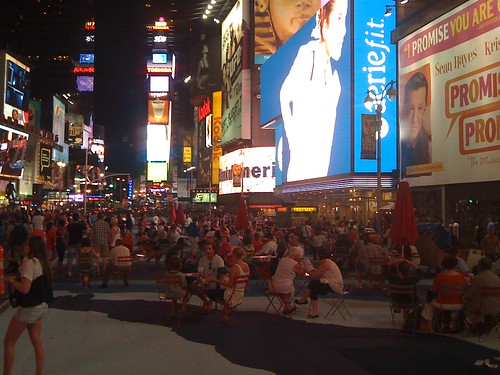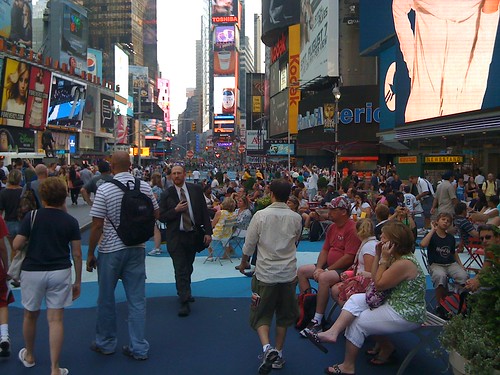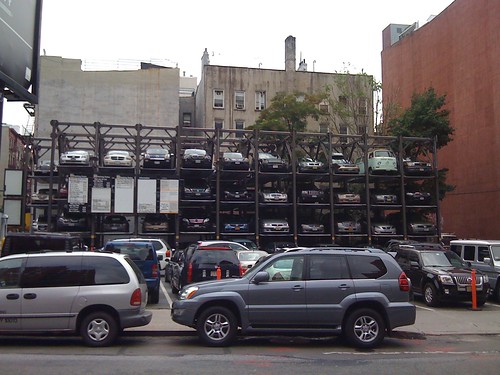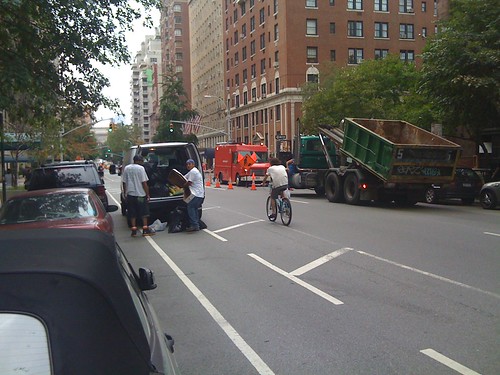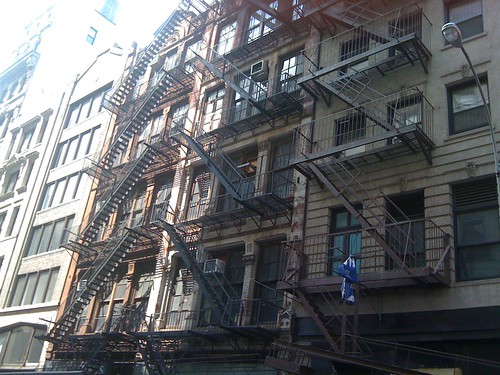I think it might be a bit tough to live in such a small space, but if you had to, this is quite an interesting way to go. via Americablog
Sunday, October 31, 2010
Friday, October 8, 2010
Music Friday - Take the Light Rail
"If your cars too spendy and your bike is too slow, it will take you anywhere you want to go"
Tuesday, October 5, 2010
Why Not Rent?
(Once again, a guest post from Ed, kindly invited by notorious density lobbyist P. Trolleypole.)
Despite the collapse of the housing market, homeownership is still out of reach for many Greater Boston residents, according to a new study by the Urban Land Institute.
So begins an article from Saturday's Boston Herald. The article spends a lot of time tossing around median home prices in Greater Boston and discussing how out of reach they are for working class households, and then talks a little about an affordable housing program that is on the MA ballot in November. The option of renting never comes up, nor is there any talk about how to make or keep rents affordable.
I'm not opposed to worrying about rising costs of shelter in cities, but the outsized focus on homeownership drives me a little crazy. This fetishization is why we have tons of awful policy in this country:
- Mortgage interest tax deductions, which distort the home market, and the benefits of which go largely to the wealthy:
The deduction is wildly regressive. The tax savings for households earning more than $250,000 is 10 times the tax savings for households earning between $40,000 and $75,000 a year, according to recent research by James Poterba and Todd Sinai.
- Fannie and Freddie, which, for example, had the US taxpayer implicitly (de facto, at this point) guarantee 95% of new mortgages in 2009, and which have a heavy single-family bias, giving sprawl a helping hand
- FHA-subsidized loans, which explicitly put every taxpayer on the hook for tons of mortgages with only 3% down (and low downpayments are a strong predictor of default, especially when prices are falling)
The list goes on.
Meanwhile, this is all in support of a system that encourages households to (1) take on massive debts in order to (2) make a huge and completely undiversified investment in (3) a highly volatile asset. So, when bubbles pop and prices drop 20, 30, 40 percent, you have made sure that a large portion of your population has seen its wealth evaporate. On top of that, being so highly indebted makes households less mobile, and less able to find new opportunities - which is why you see higher unemployment in places with more homeownership - we've encouraged people to weld their escape hatches shut.
All of which is to say - maybe it's time to rethink how we house people. Should one's shelter really be tied to one's investments? Should we be paying more attention to affordable housing policies that help renters? Should we start dismantling all these subsidies, and maybe turning some of that money to causes that help low-income renters? This aspiring density lobbyist thinks so.
Wednesday, September 22, 2010
Giving Up and Release Valves
So it seems as if the Port Authority in Pittsburgh is giving up on a rail trip between the two largest employment centers in the region. Perhaps they'll get real BRT but given that opposition always goes to the lowest common denominator such as in Berkeley, you can bet there will be a fight over dedicating the lanes.
I'm disappointed because I feel like this is a travel corridor that could benefit from a direct link from the existing light rail system. However no one wants to actually invest in transit infrastructure these days. I can hardly blame them, once it gets built they have to fight for every penny to operate the thing. If we're ever going to get a real mode share out of transit, we're going to have to start investing in something real. Not necessarily in big projects, but real headways and dedicated lanes for places that will never have rail.
~~~
I guess I'm in a pessimistic mood tonight. New Jersey is thinking about stopping the ARC tunnel for road projects (blech) and the Twin Cities is thinking about how they are going to serve the suburbs of tomorrow when people can't drive. Newsflash! Peak oil isn't our only problem people. What about those folks who can't drive because they are too old! Paratransit is expensive.
~~~
This article irked me for some reason. In it Mary misses the major point about development and land value around transit and even "urban renewal" lessons. She complains about the high rises around transit close to single family neighborhoods.
This is the problem with our thinking here. We complain about the results of our actions but don't think about the underlying actions themselves. Given that Charlotte is building its system line by line, you'll see development speculation and value increases acting as a release valve on the downtown market. If you built all the lines at once, that pressure gets relieved five or six ways instead of one way.
Right now this is just my theory, but when Denver and Houston open up their lines at relatively the same time, I am going to say that you are going to get a more diverse housing type in new stations than we've seen along corridors that are a first big transit investment in a city. The reason being is that they will meet the actual demand, instead of be a small rock in the pond.
So if regions are feeling for local businesses and the skyrocket land values around transit, the escape valve that creates greater opportunities in places that want to change is to build greater transit networks. More escape valves means greater distribution of different development and less pressure and speculation.
I'm disappointed because I feel like this is a travel corridor that could benefit from a direct link from the existing light rail system. However no one wants to actually invest in transit infrastructure these days. I can hardly blame them, once it gets built they have to fight for every penny to operate the thing. If we're ever going to get a real mode share out of transit, we're going to have to start investing in something real. Not necessarily in big projects, but real headways and dedicated lanes for places that will never have rail.
~~~
I guess I'm in a pessimistic mood tonight. New Jersey is thinking about stopping the ARC tunnel for road projects (blech) and the Twin Cities is thinking about how they are going to serve the suburbs of tomorrow when people can't drive. Newsflash! Peak oil isn't our only problem people. What about those folks who can't drive because they are too old! Paratransit is expensive.
~~~
This article irked me for some reason. In it Mary misses the major point about development and land value around transit and even "urban renewal" lessons. She complains about the high rises around transit close to single family neighborhoods.
That, of course, is precisely the problem with Charlotte's love affair with too-tall transit-oriented development zoning smack next to low-scale, historic Dilworth or - this will come - NoDa. Even if nothing's demolished, making land values so high so swiftly via zoning encourages large, expensive projects that will drive out small-scale enterprises.You want to know why that property becomes so valuable? Because it is scarce! Contrary to popular belief, there is not enough supply of urban housing to meet the demand, so the speculators come in and jack up the prices. I bet you wouldn't have this problem if transit was built out such that neighborhoods didn't gentrify because people wanted the quality locations and access. In places like New York City or Chicago that have extensive transit systems to all kinds of neighborhoods, you see that transit stations are the more diverse income places than the region as a whole.
This is the problem with our thinking here. We complain about the results of our actions but don't think about the underlying actions themselves. Given that Charlotte is building its system line by line, you'll see development speculation and value increases acting as a release valve on the downtown market. If you built all the lines at once, that pressure gets relieved five or six ways instead of one way.
Right now this is just my theory, but when Denver and Houston open up their lines at relatively the same time, I am going to say that you are going to get a more diverse housing type in new stations than we've seen along corridors that are a first big transit investment in a city. The reason being is that they will meet the actual demand, instead of be a small rock in the pond.
So if regions are feeling for local businesses and the skyrocket land values around transit, the escape valve that creates greater opportunities in places that want to change is to build greater transit networks. More escape valves means greater distribution of different development and less pressure and speculation.
Thursday, September 16, 2010
The Final Countdown!
T4 has awesomely put the source code for their transportation bill countdown clock on their website for share. Folks who are interested should pull it down. This is something that shows how lax our government has been on actually doing something they are supposed to do every 6 years. Instead they just put it off. Oh we have too much to do or there is an election coming up are always the big excuses. This is what we pay you for!
Wednesday, August 25, 2010
Hiroshima Trams
Apparently my friends think of taking pictures of trains/transit for The Overhead Wire when they are abroad. That's pretty awesome. Here's one tiled tram from Hiroshima last week that my friend and newest international correspondent @spicer took. You can check out his blog for more on his trip to Japan and a pretty stunning photo of the city after the bomb was detonated.
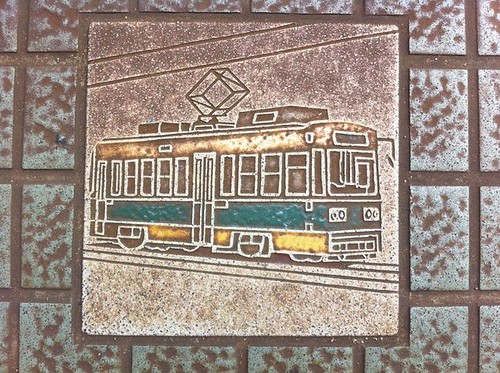

Labels:
Hiroshima,
Photo Dump,
Streetcar,
Tram
Monday, August 23, 2010
Music Monday - I'll Take My Board
You take your car to work, I'll take my board. And when you're out of fuel, I'm still afloat - Weezer
Friday, August 20, 2010
Thursday Night Notes: Fake Trolleys and Blown Up Ridership Estimates
These articles are from a few days ago but I wanted to clear my tabs and get some opinions.
Ogden is going to spend some money on buses that they hope will stimulate streetcar ridership. While I've been impressed with the Broadway Shuttle in Oakland that recently started running given the short headways and fast access to Specialties bakery and Bakesale Betty from City Center, I have to wonder if people honestly think they are going to get a real estimate from these faux trolleys. (Calling them trolleys is a whole other can of worms I could get into in another post) It's understandable to want to know what is going to happen and spending less money to do it. But I'm convinced that given the completely different experience, you're almost dooming any streetcar to death by running the fake trolleys, especially if the headways are limited. Would like to hear more on this from others though.
~~~
I know we have to make ridership estimates for capital projects. Until recently ridership estimates made or broke your ability to build projects. So color me annoyed that Denver finally gets around to updating the regional land use estimates that boost ridership for the Fastracks plan. Should we think this estimate is correct? No. Ridership estimates will always be horrific when done using software built for estimating auto trips. Should Denver have gotten more federal money for the program? Yes. Given they are already underwater paying for it, why didn't they try to fix this earlier and get more than 20% from the Feds? Were they just lazy?
Regions that are doing these massive projects like LA, Seattle, Denver, Houston, and Salt Lake City should get more help from the feds. They have a plan and are moving forward with it. It's likely that these types of network expansions that make up the Transit Space Race will give more bang for the buck than one off single line expansions.
~~~
Here's an interesting article sent in by reader David. I'm always amazed at the different issues that places like Vancouver are dealing with than the majority of the United States in terms of ridership and development pressure along transit lines.
~~~
Finally, there are tons of academic journals out there. They make you pay for their products and don't really care if only a few academics read them. But there's always interesting things to be found. Here are some links to Elsivier journals with a barrel of research on transport issues you all might care about. If you're RSS junkies like me, put them in your reader.
Ogden is going to spend some money on buses that they hope will stimulate streetcar ridership. While I've been impressed with the Broadway Shuttle in Oakland that recently started running given the short headways and fast access to Specialties bakery and Bakesale Betty from City Center, I have to wonder if people honestly think they are going to get a real estimate from these faux trolleys. (Calling them trolleys is a whole other can of worms I could get into in another post) It's understandable to want to know what is going to happen and spending less money to do it. But I'm convinced that given the completely different experience, you're almost dooming any streetcar to death by running the fake trolleys, especially if the headways are limited. Would like to hear more on this from others though.
~~~
I know we have to make ridership estimates for capital projects. Until recently ridership estimates made or broke your ability to build projects. So color me annoyed that Denver finally gets around to updating the regional land use estimates that boost ridership for the Fastracks plan. Should we think this estimate is correct? No. Ridership estimates will always be horrific when done using software built for estimating auto trips. Should Denver have gotten more federal money for the program? Yes. Given they are already underwater paying for it, why didn't they try to fix this earlier and get more than 20% from the Feds? Were they just lazy?
Regions that are doing these massive projects like LA, Seattle, Denver, Houston, and Salt Lake City should get more help from the feds. They have a plan and are moving forward with it. It's likely that these types of network expansions that make up the Transit Space Race will give more bang for the buck than one off single line expansions.
~~~
Here's an interesting article sent in by reader David. I'm always amazed at the different issues that places like Vancouver are dealing with than the majority of the United States in terms of ridership and development pressure along transit lines.
~~~
Finally, there are tons of academic journals out there. They make you pay for their products and don't really care if only a few academics read them. But there's always interesting things to be found. Here are some links to Elsivier journals with a barrel of research on transport issues you all might care about. If you're RSS junkies like me, put them in your reader.
Thursday, August 19, 2010
11:30 PM Tuesday Night Times Square
Friday, August 13, 2010
I Am a Card Carrying Member
Recently Joel Kotkin wrote an article that accused everyone who likes rail transit's ability to shape communities of being part of the "density lobby". We've heard similar lines before from Randall O'Toole about the light rail cabal in Portland. We never hear about the road building lobby (You know, AASHTO, Highway Users Alliance, et al.) from these folks but what do you expect from the libertarian fun zone.
Also, I really wish these guys would do at least a little research before they write stuff and print it. This quote was pretty funny considering Houston already has a rail line between Downtown and the Medical Center that has 45,000 riders a day.
 Email me at theoverheadwire at gmail | Send your name (real or fake), specific office (ie density integration), and location of choice. I will assign a member number and join date. Also if you just want the illustrator file I can send that along as well.
Email me at theoverheadwire at gmail | Send your name (real or fake), specific office (ie density integration), and location of choice. I will assign a member number and join date. Also if you just want the illustrator file I can send that along as well.
Even better, if I make you a card and you show it to me at the Rail~Volution blogger meetup in Portland in October, I'll buy you a beer. Cheers to density forever!
Also, I really wish these guys would do at least a little research before they write stuff and print it. This quote was pretty funny considering Houston already has a rail line between Downtown and the Medical Center that has 45,000 riders a day.
Some other urban routes--for example between Houston's relatively buoyant downtown and the massive, ever expanding Texas Medical Center--could potentially prove suitable for trains.But we can have more fun with those guys. I am now a card carrying member of the density lobby. In light of the madness, I decided to go over the edge. Anyone who wants to be a card carrying member of the density lobby, shoot me an email and I'll make you one to display proudly on your site. Of course its a big joke, but so are people that say there is a big UN bike conspiracy or actually believe there is an organized lobby for "big density". If you meet anyone that wants to fund our cabal let us know. I'm sure there is someone out there who is rich and nefarious enough to take over the world with affordable TOD!
 Email me at theoverheadwire at gmail | Send your name (real or fake), specific office (ie density integration), and location of choice. I will assign a member number and join date. Also if you just want the illustrator file I can send that along as well.
Email me at theoverheadwire at gmail | Send your name (real or fake), specific office (ie density integration), and location of choice. I will assign a member number and join date. Also if you just want the illustrator file I can send that along as well.Even better, if I make you a card and you show it to me at the Rail~Volution blogger meetup in Portland in October, I'll buy you a beer. Cheers to density forever!
Subscribe to:
Posts (Atom)

